Image
Loading...
Loading...
Sh2-308 Dolphin Head Nebula in Canis Major
Sh2-308 Dolphin Head Nebula in Canis Major

Traveller
Tucson, Marana (AZ), US
S

CMa
6h
54m
15s
·
-23°
41′
42″
1.49°
2.47″/px
91.35°N
Integration
60×60″ | 1h | |||
60×60″ | 1h | |||
60×60″ | 1h | |||
35×600″ | 5h 50′ | |||
53×600″ | 8h 50′ | |||
Totals | 17h 40′ |
60×60″=1h | |
60×60″=1h | |
60×60″=1h | |
35×600″=5h 50′ | |
53×600″=8h 50′ | |
| Totals | 17h 40′ |
Imaging equipment
Telescope | |
|---|---|
Camera | |
Mount | |
Filters | |
Accessories | |
Software |
Guiding equipment
Guiding optics | |
|---|---|
Guiding camera |
Objects
Description
Catalina, AZ, December 13-21, 2023
Sh2-308, (Sharpless 308, RCW 11, LBN 1052) is known as the Dolphin-Head Nebula in the constellation Canis Major. It is a bubble of gas created by the Wolf-Rayet star EZ CMa (WR 6). While Sh2-308 is designated as a Hydrogen-II emission region, the blue dolphin head was captured using a 3nm Oxygen-III narrowband filter. The nebula was formed about 70,000 years ago by WR 6 throwing off its outer hydrogen layers, revealing inner layers of heavier elements. Fast stellar winds, blowing at 1,700 km/s (3.8 million mph) from this star, created the bubble-shaped nebula as they swept up slower moving material from an earlier phase of the star's evolution. The gas composing the nebula is ionized by intense ultraviolet radiation. The nebula is approximately 60 light-years across and is about 4,530 light-years from Earth. In the near future, WR 6 will end its life in a supernova explosion. (Wikipedia, NASA)
The Dolphin Head was a challenging target, even in Tucson, Arizona. At the meridian, the altitude was about 23 degrees, and there were about 3 ½ hours of imaging time above 20 degrees. Also, the target passed through the light dome of Tucson to the south. Mt. Lemmon caused some atmospheric turbulence as Sh2-308 rose in the Southeast, so seeing was so-so. However, I captured data over many nights, especially with the O-III filter. The false color imaged used the HOO pallet. While there is some Ha on the top of the dolphin’s head, it is obscured by the strong O-III signal. I included the O-III and Ha clouds across the image. A starless HOO image was combined with RGB stars.
Imaging details:
Stellarvue SVX102T refractor with 0.74x focal reducer (FL = 528mm, f/5.2)
ZWO large off-axis guider with a ZWO ASI 174MM mini guide camera
Losmandy G11 mount with Gemini 2
ZWO ASI 2600MM Pro cooled monochrome camera (-10C)
Chroma 36mm Hydrogen-alpha, Oxygen-III, Red, Green, and Blue filters
Equatorial camera rotation: 90 degrees
Software: Sequence Generator Pro, ASTAP plate solving, PHD2 guiding,
Losmandy Gemini ASCOM mount control and web client interface,
SharpCap Pro for polar alignment with a Polemaster camera,
PixInsight 1.8.9-2,
Photoshop 2024
Hydrogen-a 10 min x 35 subframes (350 min), Gain 100, Offset 32, 1x1 binning
Oxygen-III 10 min x 53 subframes (530 min), Gain 100, Offset 32, 1x1 binning
Red 1 min x 60 subframes (60 min), Gain 100, Offset 32, 1x1 binning
Green 1 min x 60 subframes (60 min), Gain 100, Offset 32, 1x1 binning
Blue 1 min x 60 subframes (60 min), Gain 100, Offset 32, 1x1 binning
Total integration time: 17.7 hours
Sh2-308, (Sharpless 308, RCW 11, LBN 1052) is known as the Dolphin-Head Nebula in the constellation Canis Major. It is a bubble of gas created by the Wolf-Rayet star EZ CMa (WR 6). While Sh2-308 is designated as a Hydrogen-II emission region, the blue dolphin head was captured using a 3nm Oxygen-III narrowband filter. The nebula was formed about 70,000 years ago by WR 6 throwing off its outer hydrogen layers, revealing inner layers of heavier elements. Fast stellar winds, blowing at 1,700 km/s (3.8 million mph) from this star, created the bubble-shaped nebula as they swept up slower moving material from an earlier phase of the star's evolution. The gas composing the nebula is ionized by intense ultraviolet radiation. The nebula is approximately 60 light-years across and is about 4,530 light-years from Earth. In the near future, WR 6 will end its life in a supernova explosion. (Wikipedia, NASA)
The Dolphin Head was a challenging target, even in Tucson, Arizona. At the meridian, the altitude was about 23 degrees, and there were about 3 ½ hours of imaging time above 20 degrees. Also, the target passed through the light dome of Tucson to the south. Mt. Lemmon caused some atmospheric turbulence as Sh2-308 rose in the Southeast, so seeing was so-so. However, I captured data over many nights, especially with the O-III filter. The false color imaged used the HOO pallet. While there is some Ha on the top of the dolphin’s head, it is obscured by the strong O-III signal. I included the O-III and Ha clouds across the image. A starless HOO image was combined with RGB stars.
Imaging details:
Stellarvue SVX102T refractor with 0.74x focal reducer (FL = 528mm, f/5.2)
ZWO large off-axis guider with a ZWO ASI 174MM mini guide camera
Losmandy G11 mount with Gemini 2
ZWO ASI 2600MM Pro cooled monochrome camera (-10C)
Chroma 36mm Hydrogen-alpha, Oxygen-III, Red, Green, and Blue filters
Equatorial camera rotation: 90 degrees
Software: Sequence Generator Pro, ASTAP plate solving, PHD2 guiding,
Losmandy Gemini ASCOM mount control and web client interface,
SharpCap Pro for polar alignment with a Polemaster camera,
PixInsight 1.8.9-2,
Photoshop 2024
Hydrogen-a 10 min x 35 subframes (350 min), Gain 100, Offset 32, 1x1 binning
Oxygen-III 10 min x 53 subframes (530 min), Gain 100, Offset 32, 1x1 binning
Red 1 min x 60 subframes (60 min), Gain 100, Offset 32, 1x1 binning
Green 1 min x 60 subframes (60 min), Gain 100, Offset 32, 1x1 binning
Blue 1 min x 60 subframes (60 min), Gain 100, Offset 32, 1x1 binning
Total integration time: 17.7 hours
Comments
Loading...
More from this user
Images in the same area